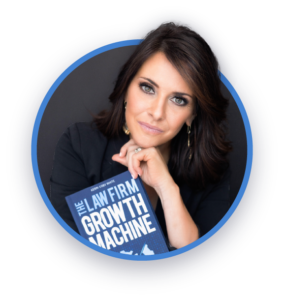Did you know that up to 40% of potential legal clients never make it past the intake process? Not because they aren’t qualified, but because the firm wasn’t prepared to handle the volume of inquiries that came with rapid growth. It’s a sobering statistic. And if you’re actively investing in marketing, networking, or expanding your referral relationships, this is a risk that lands squarely on your doorstep. Growth is exciting but it’s unforgiving. Without scalable systems and legal intake specialist training in place, you’ll lose leads, tarnish your reputation, and leave money on the table.
Many firms believe that hiring a few more intake team members is the answer. It’s not. Throwing bodies at the problem without building the right systems only creates new chaos. The truth is, rapid growth exposes every crack in your intake process. You need workflows that scale, technology that helps (not hinders), a team that’s supported with ongoing legal intake specialist training, and leadership that embraces a data-driven mindset. In this post, we’ll walk through exactly how to prepare your intake process and your team so that when growth hits, you’re ready not just to survive it, but to thrive.
Understanding the Impact of Rapid Growth on Legal Intake
Rapid growth sounds exciting and it is. But too often, I see firms invest heavily in marketing, start generating more leads, and then feel blindsided by what happens next. Their intake team suddenly faces double or triple the volume of calls, emails, web form submissions, and chat inquiries. The systems that worked “just fine” when things were steady now buckle under the pressure. Without the right processes and legal intake specialist training, even the most promising growth can turn into a missed opportunity.
Let’s walk through the most common ways this shows up:
Delayed Responses
When intake teams can’t keep up with the pace of new inquiries, response times stretch out sometimes from minutes to hours or even days. And here’s the hard truth: today’s legal consumers won’t wait. If you don’t respond quickly, they will call the next firm on their list. According to industry studies, firms that respond to inquiries within the first five minutes have a 21x higher chance of converting that lead compared to slower responders. Speed matters, and legal intake specialist training plays a crucial role in equipping your team to respond quickly, empathetically, and effectively even under pressure.
Inconsistent Follow-Ups
Without a clear, repeatable intake process, follow-ups become inconsistent at best and nonexistent at worst. In the chaos of a high-growth period, it’s easy for leads to slip through the cracks especially when intake staff are manually tracking callbacks, texts, and emails across multiple systems. And here’s what I tell firms all the time: every lost lead represents a lost client and lost revenue. You’ve already paid to generate that lead, don’t waste it.
Overburdened Staff
Your intake team is the face of your firm to every new prospect. If they’re overwhelmed, exhausted, and operating without a net, the client experience suffers. Quality drops. Calls get rushed. Empathy disappears. Even your best intake reps will burn out if they’re forced to operate in a system that isn’t built to scale. And when intake team morale drops, turnover follows creating a vicious cycle that impacts your ability to serve clients and grow revenue.
If your firm is growing, your intake process must grow with it. That doesn’t mean more people alone, it means smarter systems, better training, and tools that support the team. Build the right foundation now, and you’ll be ready to capture every opportunity growth brings your way.
Building a Scalable Legal Intake Process
Centralize Client Inquiries
Consolidate all client communication channels into a single, unified system. These channels typically include phone calls, emails, website forms, live chat, text messaging, and in some cases, social media inquiries. When these different channels operate in silos, it becomes easy for inquiries to be missed or delayed. Centralization ensures that every lead is captured in one place, allowing intake staff to track, manage, and respond to all client interactions efficiently.
Using a unified system also gives intake managers and leadership visibility into the entire pipeline. They can see how many leads are coming in, how quickly they are being handled, and where in the process leads may be stalling. This level of visibility is critical for maintaining service quality during periods of rapid growth.
Standardize Procedures
Develop clear, documented protocols for handling all types of inquiries. Standardized procedures ensure consistency in how leads are treated, regardless of who on the team is managing the interaction. This consistency is key to delivering a high-quality, professional experience to every prospective client.
Start by mapping out the ideal intake flow from first contact through signed engagement. Create scripts and talking points for initial conversations. Define when and how follow-up should occur, and establish a cadence for email, text, and phone outreach. Set clear guidelines for when intake staff should escalate inquiries to attorneys or senior team members.
Written procedures help intake staff understand expectations and allow new hires to ramp up quickly. They also reduce errors and variability in the intake experience, which is critical when handling a higher volume of leads.
Leverage Technology
Use legal intake software to automate and streamline key parts of the intake process. Automation allows your team to focus on building relationships with prospective clients rather than getting bogged down in repetitive administrative tasks.
For example, intake software can automatically send a confirmation email to a prospect immediately after an inquiry is received. This quick acknowledgment builds trust and lets the prospect know that their request is being handled. The software can also be configured to schedule consultations, send reminders to reduce no-show rates, and trigger follow-up sequences if a lead does not initially convert.
Advanced intake systems provide valuable reporting tools that help track key metrics such as inquiry volume, response time, conversion rates, and staff performance. This data helps leadership make informed decisions and continuously improve the intake process.
It is also important to integrate intake software with your case management system. When integration is seamless, leads that convert to clients flow smoothly into your legal management tools. This eliminates duplicate data entry and ensures accurate, up-to-date information throughout the client lifecycle.
The goal of leveraging technology is not to replace human interaction. Rather, it is to create a more efficient, reliable process that allows intake staff to spend more time engaging meaningfully with prospective clients.
Training and Empowering Your Intake Team
Let me be very clear. No system, no technology, and no fancy reporting dashboard will replace a well-trained, well-led intake team. Your intake professionals are the voice of your firm. They are the first human connection a potential client has with you. That first interaction shapes not only whether the client signs with your firm but also how they feel about your firm throughout the client journey.
Intake is not an administrative role. It is sales, it is client care, and it is trust-building. This is why your intake team needs thoughtful, consistent training and strong leadership. A well-prepared intake team can turn more leads into loyal clients while providing an exceptional client experience. Here is how to get there.
One of the biggest mistakes I see firms make is treating legal intake specialist training as a one-time event. They hire new reps, run through a basic process overview, and then send them straight to the phones. That is not how high-performing teams are built.
Legal intake specialist training must be ongoing and purposeful. Schedule regular sessions, ideally at least monthly, to keep your team sharp and engaged. Use these sessions to reinforce best practices, role-play different client scenarios, share updates to your intake process, and sharpen communication skills. Intake is a dynamic role, and your training program should evolve as your firm grows and as client expectations change.
Let’s take a look at this
I coached a firm that began holding a weekly “power hour” dedicated to legal intake specialist training. They invested just one hour a week in focused learning and practice. Within two months, their conversion rates increased by 17 percent. The reason was simple: their reps were engaged, learning from each other, and feeling invested in the firm’s success.
In addition to scheduled training, encourage ongoing peer learning. Create a culture where intake team members can openly share what works for them and where they need support. This not only builds skills but also strengthens team cohesion
Emphasize Soft Skills
Here is something I tell every intake leader. Clients are not evaluating your intake team based on their legal knowledge. They are evaluating them based on how they feel after the interaction.
Teach your team to lead with empathy, patience, and active listening. For many prospective clients, reaching out to a law firm is a stressful, emotional experience. If your intake reps sound rushed, robotic, or transactional, trust will erode quickly. And trust is everything in legal services.
Soft skills training should be an integral part of your intake program. Role-play common intake scenarios and help your team develop the ability to manage emotional conversations with sensitivity and care. Focus on tone, pacing, and word choice. Help your team practice ways to convey warmth and understanding, even when following a structured process.
Empower your intake staff to treat each prospect as an individual, not a task to check off. A small difference in how a call is handled can have a profound impact on whether that person chooses your firm and on how they speak about your firm to others.
Set Clear Expectations
High-performing teams thrive when expectations are clearly defined and consistently reinforced. Take the time to define what success looks like in intake. This means setting measurable performance standards that every team member understands and is accountable to. Key performance indicators might include:
- Average response time to new inquiries
- Number of follow-up touchpoints per lead
- Conversion rates for qualified leads signed
- Client satisfaction scores following intake
Establishing these benchmarks gives your team clarity and direction. But do not stop at setting the metrics. Actively coach to them. Share the data with your team regularly so they can see how they are performing. Celebrate wins when goals are met or exceeded. Address gaps through additional training and support.
Incorporate performance discussions into your regular team meetings. Use metrics as a tool for growth, not punishment. When your team understands how their efforts directly impact both firm results and client experience, they will be more motivated to continually improve.
Finally, foster a culture where continuous learning is valued. Encourage your team to take ownership of their development and to seek out opportunities to enhance both their technical and interpersonal skills.
Case Study: Successful Scaling of Legal Intake
Let’s take a look at a real-world example. A mid-sized personal injury law firm had recently ramped up its digital marketing efforts investing heavily in paid ads, SEO, and local community outreach. Within three months, their inbound inquiries had more than doubled. At first, this seemed like a huge win. But the intake team wasn’t ready. Calls were going unanswered, web form leads sat in inboxes for hours, and intake reps were overwhelmed trying to keep up. The result? A surge in lost opportunities and growing frustration across both the team and prospective clients.
Recognizing the problem, the firm’s leadership took decisive action. They centralized all communication channels routing calls, emails, and website inquiries into a unified intake system. Standardized procedures were established so every intake rep followed the same best practices for follow-up and lead tracking. Intake software was introduced to automate appointment scheduling and ensure no lead fell through the cracks. Just as importantly, the firm invested in legal intake specialist training, emphasizing both soft skills and operational efficiency. The results? Within six months, intake conversion rates jumped by 22%, and client satisfaction scores rose dramatically. More leads were handled faster, with greater empathy and professionalism. The firm was now equipped not just to manage growth but to fully capitalize on it.
Laying the Foundation for Sustainable Growth
Preparing your law firm’s intake process for rapid growth is essential if you want to capture new opportunities and maintain client satisfaction. As your marketing efforts bring in more leads, your intake systems must be equipped to handle the increased volume with speed, consistency, and professionalism. By centralizing inquiries, standardizing procedures, and leveraging the right technology, you create a strong operational backbone that ensures no lead falls through the cracks.
Just as important is empowering your intake team with ongoing training and clear expectations. When your people and processes work in harmony, your firm is prepared not just to manage growth but to thrive through it. For more insights on optimizing your legal intake process, visit KerriJames.co.










